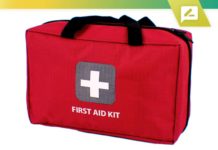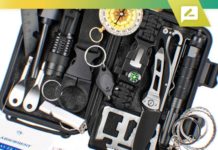Effective communication is the cornerstone of personal and professional success. From developing positive relationships to advancing your career, mastering communication skills can unlock numerous opportunities. Despite its importance, communication is often taken for granted, with many assuming it involves talking and listening. However, true communication encompasses much more—body language, tone of voice, and even written and visual elements all play vital roles. This article delves into the multifaceted world of communication, offering comprehensive insights and actionable tips to enhance your abilities.
Understanding Communication Skills
Communication skills refer to the ability to convey information effectively and efficiently. They encompass verbal, non-verbal, written, and visual forms, each contributing uniquely to exchanging ideas and information. Effective communication ensures that the recipient understands the intended message, minimizing misunderstandings and fostering harmonious interactions.
The Importance of Communication Skills
Good communication is crucial in both personal and professional settings. Strong communication skills can improve colleague relationships, enhance teamwork, and boost overall productivity in the workplace. Moreover, effective communication can help you stand out during job interviews, as employers highly value this soft skill. According to LinkedIn research, communication skills are the soft ones employers seek the most.
Communication is key to understanding and connecting with others in personal relationships. It helps resolve conflicts, build trust, and create a supportive environment. Mastering communication can improve your interactions and build stronger, more fulfilling relationships.
Types of Communication
Verbal Communication
Verbal communication involves using spoken words to convey information. This can range from casual conversations to formal presentations. The effectiveness of verbal communication depends on what is said and how it is said. Tone, pitch, and clarity are crucial elements that influence how your message is received.
Non-Verbal Communication
Non-verbal communication includes body language, facial expressions, and gestures. These cues can significantly impact how your message is perceived. For instance, maintaining eye contact shows attentiveness, while crossed arms may signal defensiveness. Being aware of non-verbal signals can enhance your ability to communicate effectively.
Written Communication
Written communication encompasses emails, reports, and other forms of written text. Clarity, conciseness, and proper grammar are essential for effective written communication. It is important to tailor your writing to your audience, ensuring your message is easily understood.
Visual Communication
Visual communication involves using images, charts, and other visual aids to convey information. When used effectively, visuals can enhance understanding and retention of the message. However, it is crucial to use visuals judiciously, ensuring they complement rather than distract from the content.
Improving Your Verbal Communication
Know Your Message
Before you speak, it is important to know what you want to communicate. Begin with a clear purpose and structure your conversation logically. For example, start with your main point, provide supporting reasons, and conclude with possible outcomes. This approach makes your message clear and makes you appear more professional and knowledgeable.
Use Pitch and Tone Effectively
Your pitch and tone can significantly influence how your message is received. A lower pitch tends to convey authority and experience, while variations in tone can keep your audience engaged. Practice controlling your breath to project your voice confidently and strategically, using pauses to capture attention.
Avoid Conversation Fillers
Words such as “um,” “like,” and “you know” can detract from your message. Practice speaking without these fillers to sound more confident and articulate. Preparing in advance and practicing your speech can help reduce the use of these fillers.
Listen Actively
Listening is a crucial part of communication. Pay attention to what the other person is saying without interrupting. Show that you are listening by nodding and providing verbal acknowledgments. Active listening helps you understand the other person better and fosters mutual respect and understanding.
Enhancing Non-Verbal Communication
Maintain Positive Body Language
Your body language can say a lot about you. Maintain an open posture, make eye contact, and use appropriate gestures. These non-verbal cues can make you appear more approachable and engaged.
Be Mindful of Facial Expressions
Facial expressions can convey a wide range of emotions. Ensure that your facial expressions match the message you are trying to convey. For example, smiling when giving positive feedback or maintaining a serious expression when discussing a serious issue.
Use Gestures Appropriately
Gestures can enhance verbal communication, but it is important to use them appropriately. Avoid excessive or distracting gestures. Instead, use purposeful gestures to emphasize key points.
Mastering Written Communication
Proofread and Edit
Ensure that your written communication is free of spelling and grammar errors. Use online tools to check for mistakes and proofread your work to ensure clarity and coherence.
Be Concise and Specific
Keep your writing clear and to the point. Structure your message using the BRIEF acronym—Background, Reason, Information, End, Follow-up. This ensures that your writing is comprehensive yet concise.
Tailor Your Writing to Your Audience
When writing, consider your audience. Tailor your tone and language to suit the recipient, making your message more relatable and easier to understand.
Format Your Writing
Good formatting enhances readability. Use bullet points, paragraphs, and bold text to break up long passages. Highlight key points and ensure that your message is easy to follow.
Leveraging Visual Communication
Use Visuals Judiciously
Visuals should complement your message, not distract from it. Use charts, graphs, and images to enhance understanding, but avoid overloading your presentation with unnecessary visuals.
Choose the Right Type of Visual
Select the appropriate type of visual to convey your message. For instance, a bar chart can be used to compare data or an infographic can be used to summarize information. Ensure that your visuals are clear and professional.
Keep It Simple
Simplicity is critical in visual communication. Avoid clutter and focus on delivering a clear and concise message. Use clean, professional templates and ensure your visuals align with your overall message.
Building Empathy in Communication
Understand the Other Person’s Perspective
Empathy is crucial for effective communication. Try to understand the other person’s viewpoint and respond accordingly. This can help reduce misunderstandings and foster a more positive interaction.
Practice Active Listening
Active listening involves fully focusing on the speaker, understanding their message, responding thoughtfully, and remembering what was said. This helps you know the other person better and shows that you value their input.
Respond Appropriately
When responding, show that you have listened and understood the other person’s perspective. Acknowledge their feelings and provide a thoughtful response. This can help build trust and improve your overall communication.
Advanced Communication Strategies
Storytelling
Storytelling is a powerful communication tool. It can make your message more engaging and relatable. Use stories to illustrate your points and capture your audience’s attention.
Use Framing
Framing involves presenting information to highlight its significance to the recipient. Think about what the other person needs to know and frame your message to highlight their benefits or importance.
Avoid Jargon
Jargon can create barriers to communication. Avoid using technical terms unless you are sure that your audience understands them. Instead, use clear and straightforward language to convey your message.
Continuous Improvement
Seek Feedback
Ask colleagues, friends, or mentors for feedback on your communication skills. Use this feedback to identify areas for improvement and work on enhancing your skills.
Practice Regularly
Like any other skill, communication requires practice. Look for opportunities to practice your communication skills in various settings. This will help you become more confident and effective.
Read and Learn
Reading often can enhance your communication skills. Notice how different authors convey their messages and emulate the styles you like. Additionally, consider taking online courses or reading books on communication to gain new insights and techniques. Explore resources like Coursera for courses that can help you further develop your communication skills.
Be Patient
Improving communication skills is a continuous process that takes time and effort. Be patient with yourself and stay committed to your growth. With consistent practice and dedication, you will see significant improvements.
Conclusion
Mastering communication skills is a lifelong journey that can significantly impact your personal and professional life. By understanding the different types of communication and implementing the strategies discussed, you can become a more effective communicator. Remember to be clear, concise, and empathetic in your interactions. Utilize the power of visuals and storytelling to enhance your message, and always seek opportunities to practice and improve. With these skills, you can build stronger relationships, excel in your career, and navigate the complexities of human interaction more easily.













![Bowflex Max Total: 2024 Fitness Workout Exercise Machine [Review] Bowflex Max Total: 2020 Equipment Review For Complete Upper and Lower Body Workout](https://www.advancedliving.com/wp-content/uploads/2019/12/Bowflex-Max-Total-218x150.jpg)


